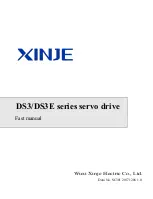
OPERATING MANUAL
Pneumatic rotary drive units type ST | DT
Wesa-Armaturen GmbH
Phone
+49 (0)7181-404-0
Mailto
Page
5
Spanninger Str. 5
Fax
+49 (0)7181-404-33
Http
www.wesa-armaturen.de
Operating manual
D-73650 Winterbach
Drive units ST | DT
Date of issue 10-2019
6.7.
Exert the same pressure on both pistons until they are fully connected to the pinion. Then turn
the pinion itself until the servo drive unit is completely closed.
6.8
Check the upper end of the pinion to ensure it is correctly aligned. If the guide-indicator chamfer
is perpendicular to the cylinder body, please go to section 6.9. If the pinion is not correctly
positioned, proceed as described in 6.8b.
6.8.b.
Turn the servo drive unit to one side with the borehole in the body vertical. Turn the pinion anti-
clockwise until the two pistons are released from the pinion. Closely servo drive unit again and
check that the pinion is in the correct position. Repeat this process until the pinion reaches its
correct position.
6.9.
Insert the springs on servo drive units with a SINGLE-ACTION
(see section 7.04 instructions on inserting the springs).
6.10.
Servo drive units with limit point settings on both sides.
Fit the side covers ensuring that their positions are correct (see Figures 6 and 8). Then insert the
pin for the internal stroke limit into the central thread of the right-hand side cover and secure it
until the tip of the stroke limit pin touches the outer surface of the piston. Use the same procedure
on the opposite stroke limit pin.
Note
: Tighten the screws crossways to ensure that the O-rings are correctly positioned.
6.11
The screws on the heads must be tightened alternately using the torque specified by the
manufacturer. See Table 3 for the correct torques for the screws.
Warning
Never pressurise the servo drive unit before the pinion has been fastened with the Seeger ring
and the heads have been locked with the tightened screws.
6.12.
Pressurise the right connector on the servo drive unit housing and check for leaks. These leaks
may occur near the connection between the housing and the heads. If you find an air leak near a
head, the head must be removed and the O-ring checked to ensure it is in the correct position. If
the seal is OK, repeat the procedure from point 6.11. Pressurise the left connector of the server
drive unit to check for possible air leaks from the upper and lower area of the pinion. If there is
an air leak from the seats of the pinion, proceed as described in section 5.6 to remove the pinion
from the servo drive unit housing, ensuring that the pistons inside the servo drive unit are not
moved. Check the condition of the upper or lower O-ring or both on the pinion, depending on
where the leak occurred. If the O-rings are in perfect condition, ensured that there is no burr or
chips in the seats of the O-rings. Clean then carefully and fit the O-rings back into their grooves.
Install the pinion again ensuring that its perpendicular position relative to the axis of the servo
drive unit housing is the same as when it was removed and also ensure that it is inserted correctly
between the teeth of the pistons which are still in position inside the servo drive unit housing.
Please contact us if the problem continues to exist.





























